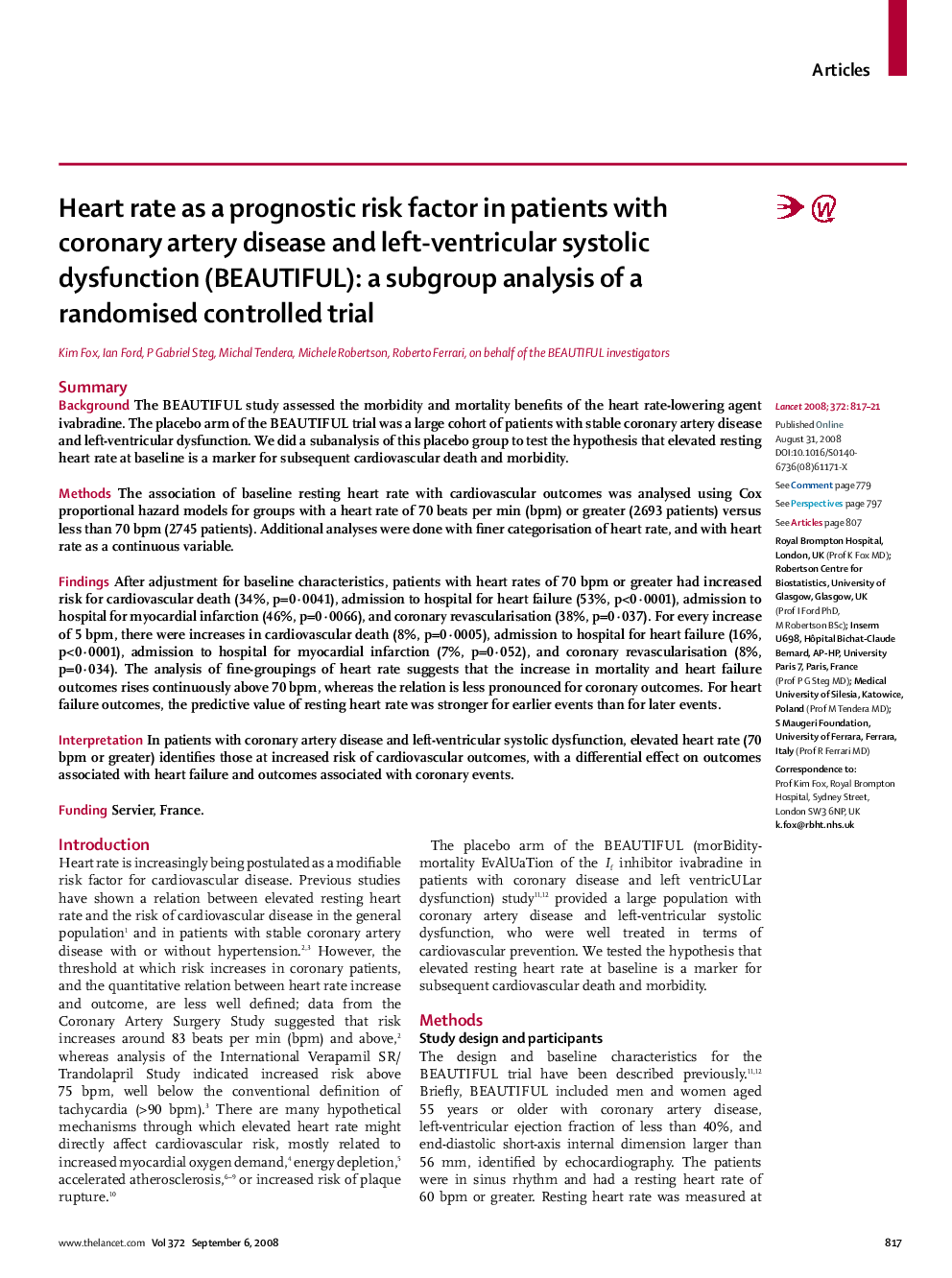| کد مقاله | کد نشریه | سال انتشار | مقاله انگلیسی | نسخه تمام متن |
|---|---|---|---|---|
| 3495999 | 1234361 | 2008 | 5 صفحه PDF | دانلود رایگان |

SummaryBackgroundThe BEAUTIFUL study assessed the morbidity and mortality benefits of the heart rate-lowering agent ivabradine. The placebo arm of the BEAUTIFUL trial was a large cohort of patients with stable coronary artery disease and left-ventricular dysfunction. We did a subanalysis of this placebo group to test the hypothesis that elevated resting heart rate at baseline is a marker for subsequent cardiovascular death and morbidity.MethodsThe association of baseline resting heart rate with cardiovascular outcomes was analysed using Cox proportional hazard models for groups with a heart rate of 70 beats per min (bpm) or greater (2693 patients) versus less than 70 bpm (2745 patients). Additional analyses were done with finer categorisation of heart rate, and with heart rate as a continuous variable.FindingsAfter adjustment for baseline characteristics, patients with heart rates of 70 bpm or greater had increased risk for cardiovascular death (34%, p=0·0041), admission to hospital for heart failure (53%, p<0·0001), admission to hospital for myocardial infarction (46%, p=0·0066), and coronary revascularisation (38%, p=0·037). For every increase of 5 bpm, there were increases in cardiovascular death (8%, p=0·0005), admission to hospital for heart failure (16%, p<0·0001), admission to hospital for myocardial infarction (7%, p=0·052), and coronary revascularisation (8%, p=0·034). The analysis of fine-groupings of heart rate suggests that the increase in mortality and heart failure outcomes rises continuously above 70 bpm, whereas the relation is less pronounced for coronary outcomes. For heart failure outcomes, the predictive value of resting heart rate was stronger for earlier events than for later events.InterpretationIn patients with coronary artery disease and left-ventricular systolic dysfunction, elevated heart rate (70 bpm or greater) identifies those at increased risk of cardiovascular outcomes, with a differential effect on outcomes associated with heart failure and outcomes associated with coronary events.FundingServier, France.
Journal: - Volume 372, Issue 9641, 6–12 September 2008, Pages 817–821